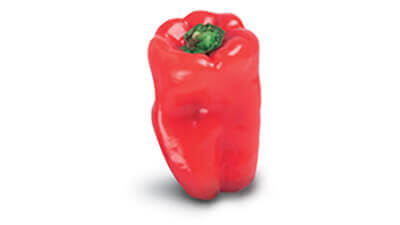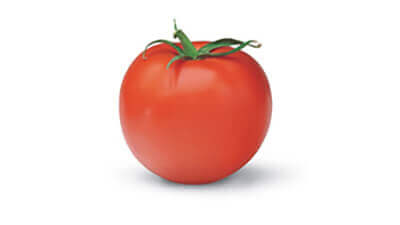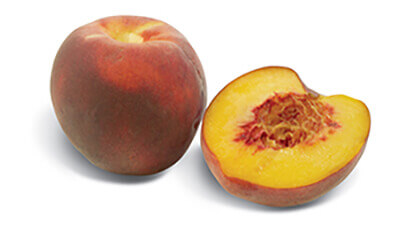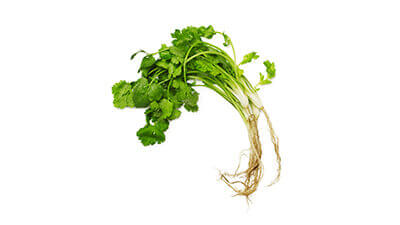Reduce food waste and save money by getting the most out of your produce. We've got loads of tips to help you get you started, from planning and storage to experimenting with the whole plant.
Plan your meals
Fresh fruit and vegies have a relatively short shelf life compared to other foods that sit happily in the pantry or can be frozen. So it makes sense to plan your meals around what needs to be used up! If this level of planning is not your bag, try starting with shopping a bit more consciously. If you can’t think of two dishes you’re going to make this week with an ingredient, choose something else! Learn more about meal planning (or get one ready made) over here.
Store it right
Different fruits and vegies need different conditions to stay their best for longer. We’ve got a detailed guide over here, but here’s a quick guide to common fruit and veg.
Note: fruit and vegies don’t need to be stored in the fridge to be safe to eat, but it makes them last a lot longer!

Apples and pears
Store them in the fridge

Citrus
Store them in the fridge

Berries and grapes
Store them in the fridge

Carrots
Store them in the fridge

Zucchini and squash
Store them in the fridge

Fresh beans and peas
Store them in the fridge

Capsicum
Store them in the fridge

Broccoli and cauliflower
Store them in the fridge

Mushrooms
Store them in the fridge in a paper bag

Bananas
Store them on the benchtop, away from other fruits

Avocadoes
Store them on the benchtop to ripen, then fridge

Tomatoes
Store them on the benchtop to ripen, then fridge

Stone fruit
Store them on the benchtop to ripen, then fridge

Potatoes and sweet potatoes
Store them somewhere cool and dark. Don't store in plastic bags.

Onions and garlic
Somewhere cool and dark. Don't store in plastic bags.

Lettuce and salad greens
Store them in the fridge, with a piece of paper towel in the bag/container.

Fresh herbs
Wrap in a damp paper towel and put in a container in the fridge.
Canned, dried and frozen
We’ve got a whole section of the website devoted to singing the praises of these pantry heroes over here. So we’ll just quickly mention that these pre-prepared and shelf-stable packs of goodness are great to have on hand for speedy dinners. And are way less likely to go off while you think of what to do with them!
Root-to-leaf cooking
Lots of us throw away perfectly good bits of fruit and vegies all the time! Here’s how to use the whole veg… root to leaf.

Fresh coriander – you can use the whole thing! Roots and stems are great in curries and stirfries, and the stems can be finely sliced and included wherever leaves are used

Broccoli and cauliflower – it’s not all about the florets. The stalk is also yummy, cooked or raw. It takes a little longer to cook than the florets, so cut it smaller or start cooking it sooner. If the stalk is tough or bitter, just give it a quick peel. Keep peeling to shave the stalk into thin strips and throw it in a salad, or keep them chunky and have with dip.

Vegies with skins – do you hate peeling carrots, potatoes and sweet potatoes? You can stop! Just give them a good wash and they’re ready to go. Try leaving the skin on pumpkin to roast. A real time saver and totally tasty.

Celery leaves – these are crisp and peppery, especially the young, pale leaves. Use them in a salad or sandwich (like you would rocket or radicchio).

Mushrooms – there’s no need to peel (or even wash). Just wipe them gently with a damp cloth. Use a pastry brush or similar if there’s any dirt. You can trim the ends if needed, but use the stems just like you use the caps.

Citrus peel – if you’re eating or juicing some citrus, zest them first and put the zest in a zip-lock bag in the freezer. Then it’s ready to go to use in cakes, pastas, salads and more.

Spring onions – you can use the whole thing, not just the white bit! Slice the greens thinly and use raw as a garnish or throw in at the end of cooking for a bit of pep!

Watermelon rind – did you know you can pickle them? Watermelon rind pickles are an American Southern classic, and are apparently great on a cheese board or with grilled meats. One to try this summer!

Onion skins, corn cobs, carrot tops, zucchini ends and more – throw them in a ziplock in the freezer, and when you have enough, use them to make your very own stock. More instructions on
how to do that over here.
Make the most of your leftovers
One way to reduce food waste and avoid throwing away money is to always make sure to use up leftovers.
If you have cooked more than is needed for that meal (for example, if you cooked for 4 but only 2 people are eating) pack up the extra before eating. You’ll have your lunch or dinner ready to go for the next day. It also helps avoid non-hungry eating.
Safely store leftovers by putting them in the fridge as soon as possible. Don’t wait until they have cooled down. As long as there is no steam coming off the food it is cool enough to go in the fridge. Use a container with a lid or a covered dish.
Lunches
Most meals are tasty as leftovers and safe to eat if they are properly stored for lunch or dinner the next day. Many meals are great for the school lunchbox, remember to pack food in an appropriate insulated lunchbox, with a frozen iceblock (or waterbottle) to keep cold food cold, or send warm meals in a thermos.
Best transportable meals
Rice and pasta dishes are great for leftovers and easy to pack for the next day. Soup is also a great option to pack and transport, and is easily kept warm in a thermos.
Leftover vegies
Healthy pizzas are a great way to use up and prevent waste of left over vegies. They are also an easy way to get those vegetable serves in! LiveLighter have a great 2-ingredient recipe for a delicious healthy base as well.
Rescue it!
If you spot some fruit or veg that’s past its peak, try these rescue remedies before sending it to the bin, compost or worm farm.

Bananas – overripe bananas are perfect in smoothies and banana cakes. They also freeze well if you’re not ready to bake just yet. Peel, remove any really gross bits, pop in a ziplock bag and freeze. Remember to label with the date and how many bananas are in there.

Tomatoes – past its peak for a salad or sandwich? Probably still good in a pasta sauce or soup. To make a healthy red sauce for pasta, parmigiana or potatoes, throw tomatoes onto a tray (red onion, whole garlic cloves and red capsicum if you have any handy), add a dash of oil and seasoning and roast in the oven. Once it’s ready, whiz it all up with a stick blender.

Limp vegies – celery, carrots, broccoli and asparagus can all go a bit soft after a while. As long as they’re not mouldy or too far gone, trimming the end and standing in some cold water can work wonders!
You could also turn them into a satisfying and nourishing bowl of end-of-the-week vegie soup. Check out our bank of delicious LiveLighter soup recipes.

Herbs - Give those sad, wilted herbs at the bottom of the crisper a second chance with this handy tip! Roughly break or chop your herbs and push them into an ice cube tray. Top up with olive or canola oil and place the tray in the freezer. Once cubes are frozen, pop them out and store in a container in the freezer.

Vegie scraps - turn vegie scraps into delicious home-made stock! put a container in the freezer and add your vegie peels, skins and ends in there as you go. Vegies that are soft, wilted or past their prime (but not rotten or mouldy) are perfect for this too. Once you’ve got about 2 cups of scraps, you’re ready to make stock! Find out how to make your own stock here.
DIY composting
Composting is a great way to reduce your food waste; and it's good for your garden too. All organic household waste (plants, animal, or their by-products) can be composted. Food scraps, cardboard, coffee ground and paper towel can all go in! Read our step-by-step guide on how to compost.


























